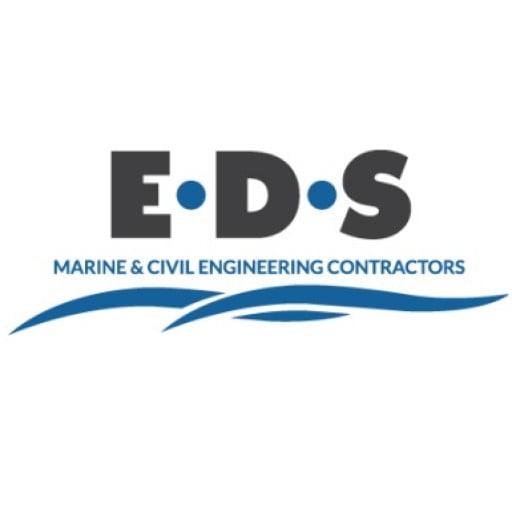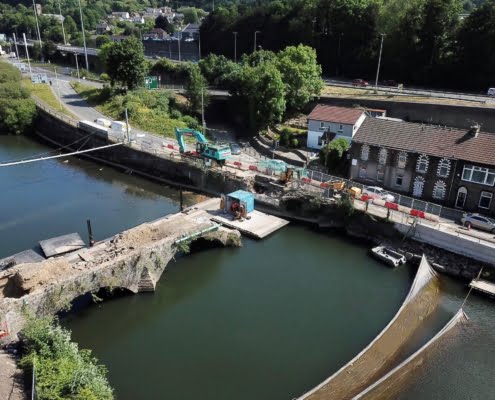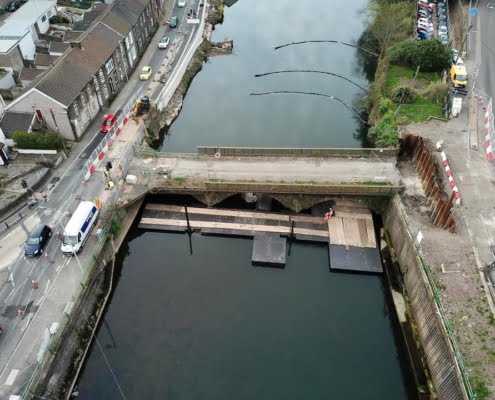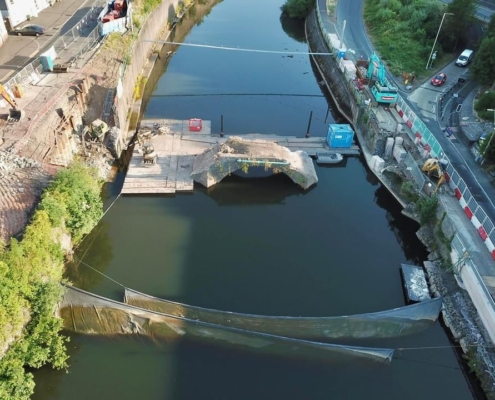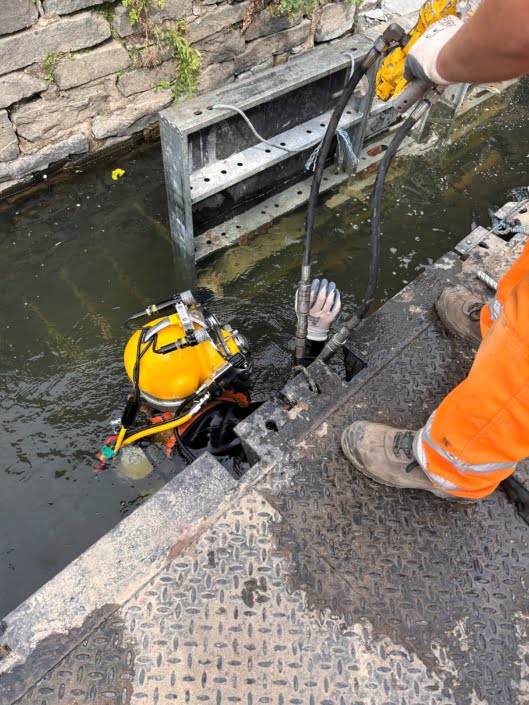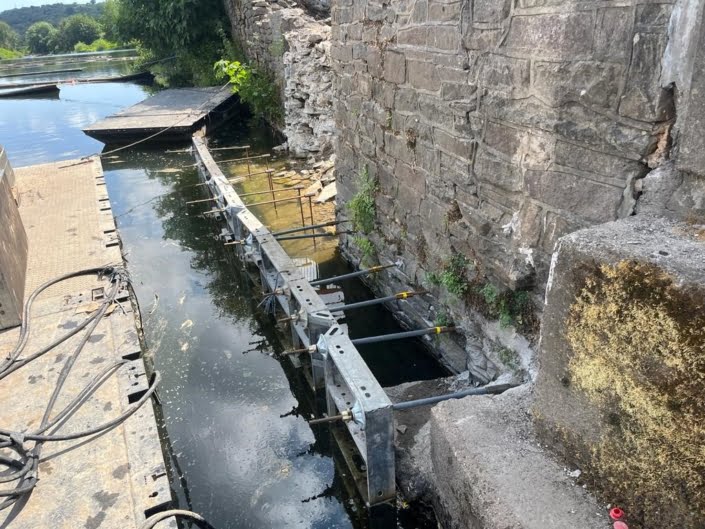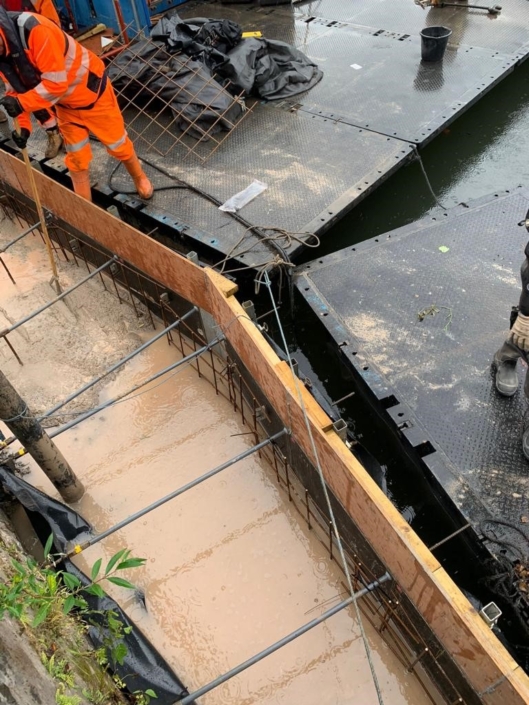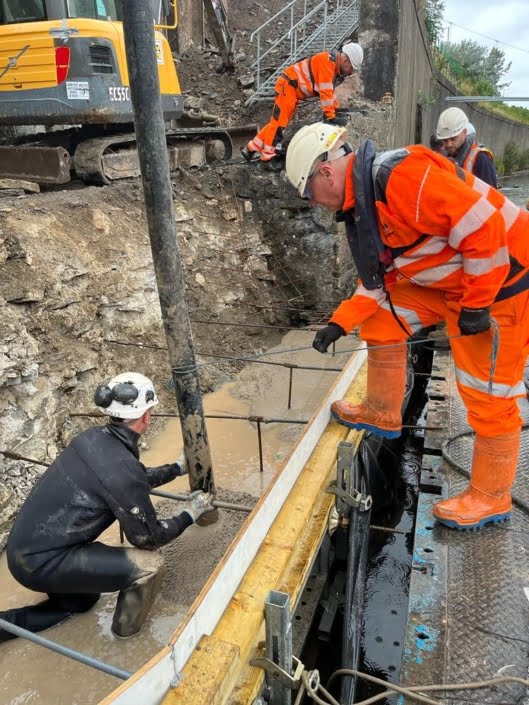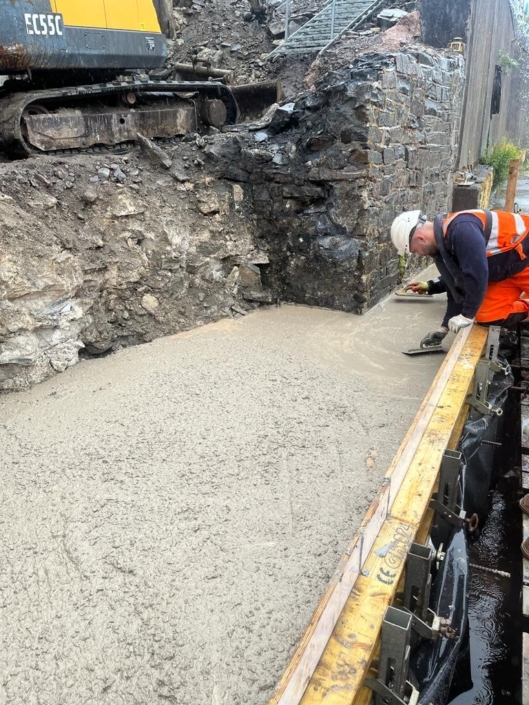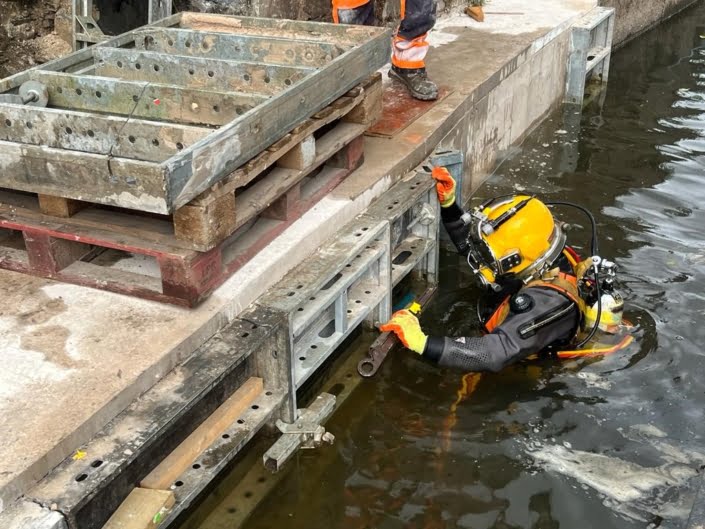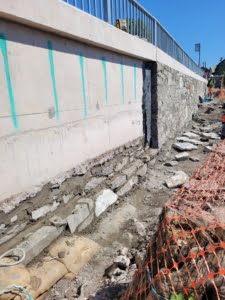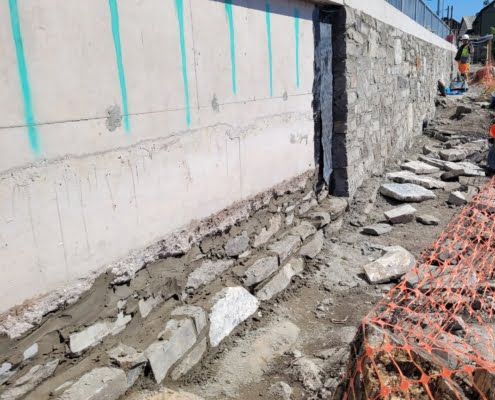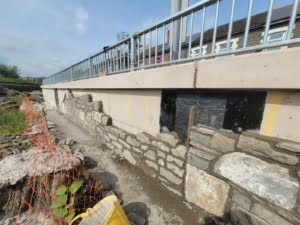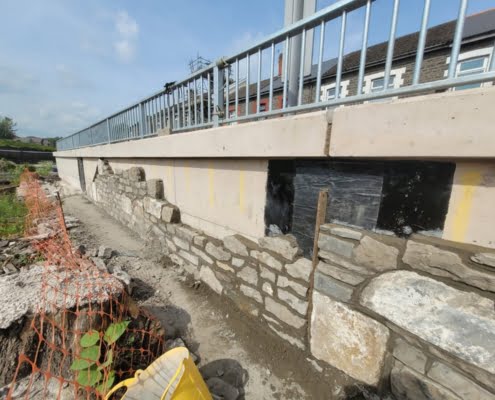Assistance with Bridge Demolition & Rebuild
EDS have recently been involved in a major local project to assist in the demolition of a listed bridge structure which spans the Afon Taff.
The bridge sustained structural damage during storms in recent years and also posed a flood risk to the adjacent houses. It was decided the bridge would be demolished but to preserve as much of the original masonry as possible in the refurbishment. This project highlights our multi disciplinary functionality incorporating our under water and above water expertise.
The river runs through the heart of Pontypridd, and residential areas span both sides of the bridge. In 2022 EDS were commissioned to build a flood/training wall and these current works will mean the area will be even more flood resilient in the future. The project consists of 3 phases utilising our own NATO pontoons, our rescue and safety trained staff, our underwater engineering diving proficiency, and our construction knowledge for the cladding of the structures along the river bank.
Phase 1- To provide access for machinery at the demolition stage of the works and enable works to be carried out by maintaining safety for any operatives during the demolition.
Key Challenges-
- Providing a platform to sustain the weight of the machines required to demolish the three-span arch structure.
- Stopping any material from the structure from entering the river.
- Transporting the material from the bridge to the roadside
- Maintaining the safety of all the machine operatives from the demolition contractor.
Solutions-
- Our own Floating NATO Pontoons were used as an access platform for machinery and operatives, with an approved temporary works design.
- A silt curtain system was placed downstream in a staggered fashion to prevent moving sediment.
- We provided a safety boat team to monitor plant and pontoon movements.
- We provided separate pontoons to transport skips from the deck to the clients access point.
Phase 2- To construct foundations for concrete abutments to support the new bridge structure.
Key Challenges-
- To install sealed formwork to undulating river rock bed.
- There would be limited space behind the shutters to install steal work.
- To insure there was no pollution of the watercourse during the concrete works.
Solutions-
- The steel formwork was placed and tied into existing structure to provide support; and we provided temporary works design for this.
- The formwork had to be the correct design specification to ensure it was sufficient for the amount of concrete to be poured to create the abutment. The shutters were also placed in a sequence that would allow access for the installation of the restraining bars.
- Timber was placed at the base of the shutters so the shape of the existing riverbed could be scribed to create a seal.
- Restraining bars were covered with plastic so they could be released once the concrete was set, and the concrete foundation was bought above water level to hand to client in order for them to construct abutments for the new bridge structure.
Phase 3- To clad the RC structures along the river bank adjacent to the bridge
We are very proud to have been part of this project and look forward to seeing the positive impact the new bridge will bring to the local community.
Key Challenges-
- There would be limited access working adjacent to the water course and public highway.
- During the summer months the temperature could affect the drying of the concrete (micro cracking).
Solutions-
- Stone for cladding re used and won from demolition of the structure which adds environmental value.
- The NATO Pontoons were used as working platform for operatives and materials.
- We worked within a traffic management plan.
- We built the stonework in accordance with the design specification.
